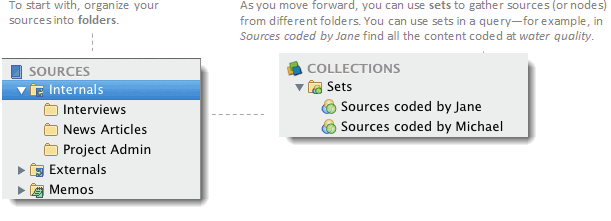

The user-friendly interface with straightforward options makes It easy for the users to operate it without any trouble.

To see what has been coded in a document you can:
#Nvivo for mac 11 help code#
On the Analyze tab, in the Coding group, click Code In Vivo. Select the text content you want to code.Ģ. This is useful if you want your nodes to reflect the language of the people you have interviewed.ġ. You can also use ‘in vivo’ coding to create and code at new nodes-the selected word or phrase is used to name the node and is (at the same time) coded at the node. When you create a new node it is added to the selected location in the node hierarchy. Enter a name-you can also enter a description or change the location for the new node and cl lick Done. On the Analyze tab, in the Coding group, under Code Selection At, click New Node.Ĥ. Using keyboard shortcuts-refer to the NVivo for Mac Help for more information about NVivo keyboard shortcuts.Īs you explore your sources you can create and ‘code at’ new nodes:ģ. Using the shortcut menu-select the content, then hold down the Control key and click (you can also use your mouse or trackpad based on the preferences for secondary clicks).ģ. Clicking options on the ribbon-on the Analyze tab, in the Coding group, under Code Selection At, click Existing Nodes.Ģ. Refer to the NVivo for Mac Help for information about coding in different source types.ģ.

The content you can select depends on the type of source you are working with. Select the content that you want to code. You may find it easier to code if you display Detail View on the right.Ģ. Display your nodes in List View and open a source in Detail View. You code your source materials to gather material about a topic and store it in nodes and cases.Īs you explore your sources, you can code at the nodes you have created:ġ. You could also create classifications for different types of people, like students or teachers.ĭefine attributes for the classification-for example, age and gender.Ĭreate a case then classify it and assign relevant attribute values to it-for example, 63 and female. To work with case classifications and attributes, you need to:Ĭreate a classification-for example, Person. Use classifications to record descriptive information, like demographic details, about the cases in your project.įor example, if you have interviewed people in a particular community, you may want to collect information about their age, gender and occupation-and compare their responses based on these attributes. Understanding classifications and attributes For example, you could create cases from selected sources or by importing descriptive attributes from a text file. If you have a large number of cases, NVivo provides ways to speed the process up. In List View, you can select a source, then on the Create tab, in the Items group, click Create as cases-this action will create a case and code the entire source at the case node. If you want to get the most out of your cases, consider classifying them and assigning attribute values. You can create cases manually just like creating nodes.


 0 kommentar(er)
0 kommentar(er)
